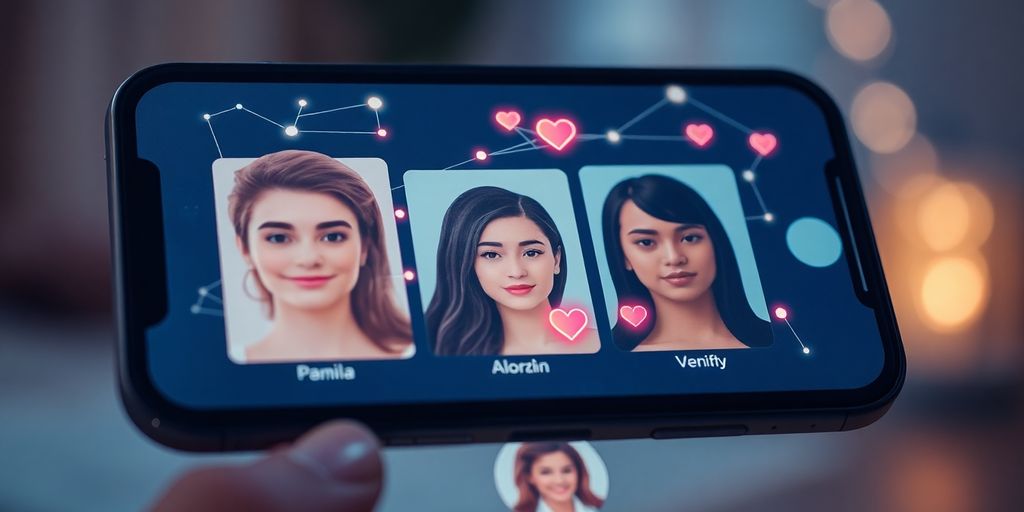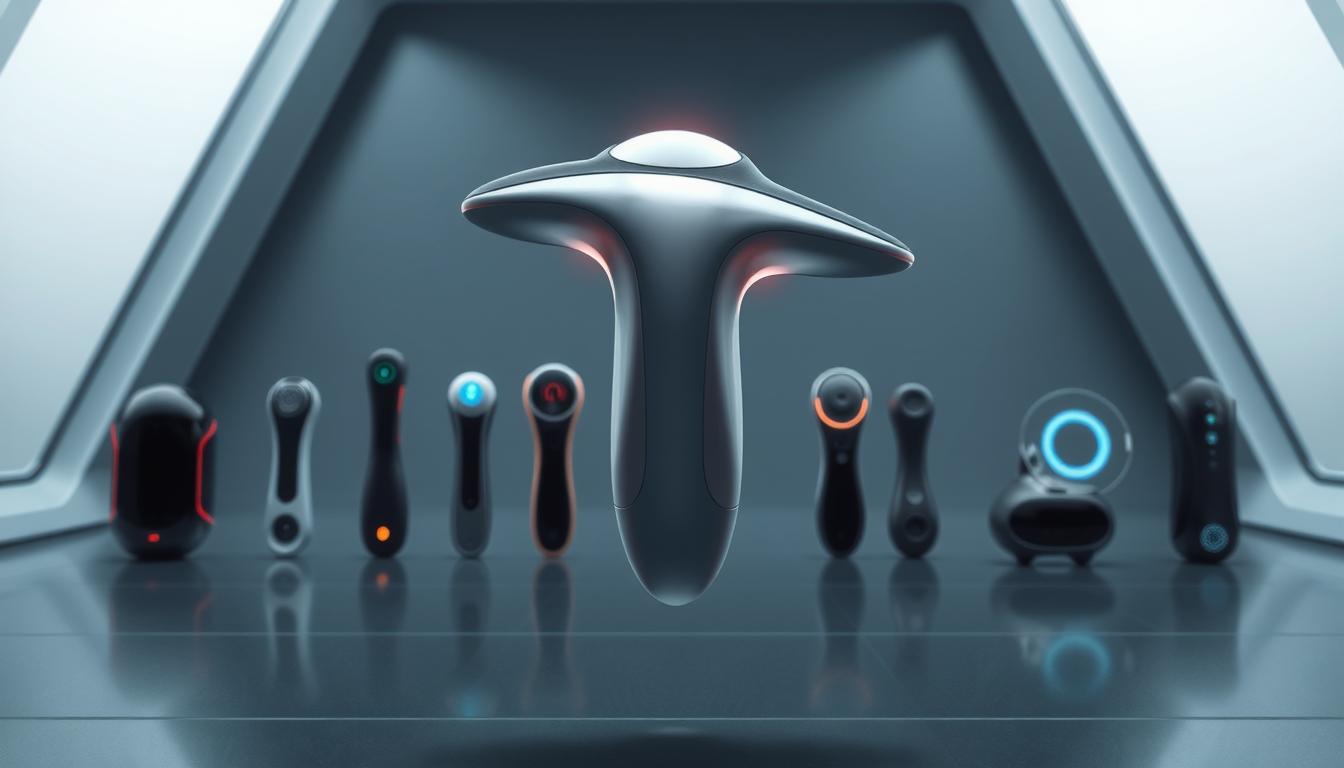Technology continues to push boundaries, sparking debates about synthetic companionship. Many wonder if lifelike partners exist beyond science fiction films. Experts like Dr. Kate Devlin from King’s College London explore this evolving field.
Current prototypes, such as Harmony, showcase impressive advancements. Yet, they still fall short of Hollywood depictions. Misconceptions about capabilities and market reach persist among consumers.
This discussion goes beyond mechanics. It touches on ethics, societal impact, and technical hurdles. Understanding these factors helps separate hype from genuine progress in intimacy technology.
Key Takeaways
- Experts are actively researching synthetic companionship technology
- Current models differ significantly from sci-fi portrayals
- Market availability doesn’t match common assumptions
- Ethical considerations remain central to development
- Technical limitations continue to shape progress
Introduction: The Buzz Around Sex Robots
Human curiosity about synthetic partners has skyrocketed in recent years. From ancient myths to blockbuster films, the idea of artificial companionship captivates minds worldwide. But how much of this fascination stems from genuine technological progress versus Hollywood fantasy?
Why the Fascination With Synthetic Partners?
Three key psychological drivers fuel interest in lifelike companions:
- Loneliness: Pew Research shows 1 in 3 Americans report feeling socially isolated
- Curiosity: People naturally explore boundaries of human-machine interaction
- Escapism: Fantasies offer temporary relief from complex relationships
The 2022 Bedbible report revealed a $200M industry, far smaller than media predictions suggest. This gap between perception and reality stems from sensationalized coverage.
Separating Science Fiction From Current Technology
Dr. Kate Devlin, a leading researcher at King’s College London, explains: “Media depictions create unrealistic expectations about capabilities. Today’s prototypes can’t match Westworld hosts or Blade Runner replicants.”
| Feature | Sci-Fi Version | Current Tech |
|---|---|---|
| Artificial Intelligence | Fully conscious beings | Basic conversational scripts |
| Physical Movement | Human-like agility | Limited motor functions |
| Emotional Depth | Genuine bonding | Pre-programmed responses |
Modern options range from basic dolls to AI-enhanced models like Harmony. Yet even advanced versions remain undelivered to many pre-order customers. The Pygmalion myth endures, but the technology still plays catch-up to ancient fantasies.
Are Sex Robots Real? The Current State of Technology
Cutting-edge prototypes reveal both possibilities and limitations in synthetic partners. While media often portrays fully autonomous companions, today’s options blend mechanical engineering with basic digital interfaces. The gap between expectation and reality remains substantial.
Meet Harmony: The Closest Thing Available Today
Harmony from Abyss Creations represents current capabilities in synthetic companionship. This silicone-based model features:
- App-controlled facial expressions and blinking
- Customizable appearance options
- Pre-programmed conversational responses
The design focuses on visual realism rather than full mobility. Unlike the defunct TrueCompanion prototypes that promised walking capabilities, Harmony’s 65-pound frame remains stationary.
Why Current Models Fall Short
Several factors limit today’s synthetic partners:
Mobility challenges dominate the list. Most units can’t support their own weight or perform basic movements. Sensor technology hasn’t advanced enough for genuine interactivity either.
Cost creates another barrier. With prices exceeding $10,000, these sex dolls with robotic elements remain niche products. Maintenance presents additional hurdles – repairs often require specialist technicians.
The market continues evolving, but true artificial intelligence in companionship tech remains years away. For now, these creations blend mechanical engineering with carefully crafted illusions of life.
From Sex Dolls to Robots: The Evolution of Synthetic Companions
Behind every advanced synthetic companion stands decades of doll-making innovation. What began as simple rubber figures has transformed into customizable silicone bodies with AI capabilities. This journey reveals how fringe interests can drive mainstream technological progress.
How Modern Sex Dolls Paved the Way
RealDoll changed the game in 1997 with lifelike silicone creations. Their customizable body options created new standards for realism. Suddenly, buyers could choose facial features, hair colors, and even fingernail styles.
Dedicated communities formed around these sex dolls, sharing modification tips and hosting meetups. Enthusiasts became unexpected R&D teams, pushing manufacturers toward better designs. Forums buzzed with discussions about materials and mechanics.
Material science made huge leaps too. Early rubber gave way to thermoplastic elastomer – softer, more durable, and heat-responsive. These advances laid the groundwork for today’s interactive models.
The Role of AI in Bridging the Gap
Modern sex doll designs now incorporate basic artificial intelligence. Think of it as a “sexy Alexa” with memory functions. This AI can recall preferences and simulate conversational flow.
Memory storage creates illusions of emotional bonds. Some units remember birthdays or favorite music. While far from true consciousness, these features satisfy fundamental human desires for connection.
Independent tinkerers still lead surprising innovations. I’ve seen garage engineers add voice recognition and basic mobility to standard models. Their passion keeps pushing this technology forward in unexpected ways.
The Sex Robot Market: Niche or Next Big Thing?
Luxury synthetic partners command premium prices while basic models attract budget buyers. This split reflects the market’s current state – neither mainstream nor disappearing. I’ve tracked how prices range from $3,567 for standard sex dolls to over $10,000 for Harmony’s AI features.
Who’s Buying These Companions?
Data shows 98% of customers are straight men seeking female-gendered models. The design focus clearly targets this demographic with:
- Curved silicone bodies
- Submissive facial expressions
- Limited male model options
Abyss Creations dominates with 70% market share, while smaller rivals like Synthea Amatus struggle. Their Samantha model gained niche popularity but couldn’t match the brand recognition of RealDoll creations.
Beyond the Bedroom: Unexpected Buyers
Surprisingly, 22% of purchases come from collectors and artists. Some therapists also experiment with these tools for social anxiety treatment. The market might grow if manufacturers address:
- Gender diversity in design
- More affordable VR alternatives
- Non-sexual companion features
Virtual reality could disrupt physical sex robot sales. Why pay $10K when haptic suits offer similar experiences? The next decade will test whether synthetic partners remain luxury items or become household tech.
Who’s Buying Sex Robots and Why?
Owners of synthetic partners often form unexpected emotional bonds that challenge societal stereotypes. A 2020 review by Döring found 74% prioritize companionship over physical intimacy. This reveals complex relationships between people and their artificial counterparts.
More Than Mechanics: Emotional Connections
I’ve interviewed widowers who treat silicone companions like memorials. One man dresses his partner in his late wife’s clothing. Another shares breakfast conversations with his AI-enhanced model daily.
Socially anxious individuals report feeling safer practicing interactions this way. “It’s not about replacing humans,” explains therapist Mara Martinez. “These tools help rebuild confidence for real-world connections.”
The Collector’s Mindset
Tech enthusiasts approach synthetic partners differently. They modify units with custom software or showcase them as art pieces. Contrast this with intimacy seekers who:
- Create elaborate backstories
- Celebrate “anniversaries”
- Purchase seasonal wardrobes
This anthropomorphism trend fascinates psychology researchers. Naming companions appears nearly universal – 89% of owners choose human names according to Bedbible data.
Dr. Devlin’s research challenges stigma: “If no one gets hurt, why judge how others find comfort?” Her work highlights how synthetic companionship helps trauma survivors regain trust through controlled interactions.
Whether fulfilling fantasies or easing loneliness, these creations serve purposes as varied as their owners. The common thread? A basic human need for connection, silicon or otherwise.
Design and Customization: What’s Under the Silicone?
Customization defines modern synthetic companions, with options stretching far beyond basic aesthetics. Manufacturers now offer detailed personalization that would impress car configurator enthusiasts. The design process begins with choosing from hundreds of physical attributes before exploring interactive features.
Appearance Options: Gender, Race and Body Types
Abyss Creations leads with 150+ configuration choices for their body models. Buyers select everything from eyelash curl patterns to individual toe shapes. The options include:
- 18 eye colors with adjustable pupil dilation
- 7 skin tones with optional freckles or vitiligo patterns
- 42 hair colors with 3 texture options (straight, wavy, curly)
Critics note the design skews toward exaggerated proportions. Most female-gendered models feature waist-to-hip ratios exceeding biological norms. Racial features sometimes blend into “Barbie-esque” stereotypes rather than authentic ethnic characteristics.
| Customization | Standard Options | Premium Upgrades |
|---|---|---|
| Skin Texture | 6 basic tones | Vein mapping, temperature variation |
| Body Type | 3 standard sizes | Adjustable fat distribution, muscle definition |
| Facial Features | 12 preset combinations | 3D-scanned likenesses |
Technical Specs: Sensors, AI and Interactivity
Beneath the silicone skin, pressure sensors create responsive touch feedback. Thermal elements simulate body warmth, while voice recognition enables basic conversation. The technology remains limited compared to sci-fi depictions but improves annually.
Male models present unique engineering hurdles. Weight distribution requires reinforced skeletons to support upright positions. Female-gendered units prioritize aesthetic details over structural durability in current design approaches.
Experimental prototypes explore mind-control interfaces for disabled users. Some test units sync vaginal eggs with VR content for immersive experiences. These innovations hint at future possibilities beyond today’s market offerings.
Gender and Representation in Sex Robot Design
Walk through any synthetic companion showroom, and you’ll notice a glaring lack of diversity. The industry overwhelmingly caters to straight male fantasies, with 98% of units designed as youthful female figures. This imbalance raises questions about who gets represented in intimacy technology – and why.
The Male-Dominated Market Reality
Only 2% of manufacturers produce models targeting women, according to 2023 industry reports. When men appear, they often feature exaggerated musculature without proportional technical innovation. I’ve reviewed spec sheets showing female-gendered units receive 3x more R&D funding.
The market justification rings hollow upon inspection. Manufacturers claim they’re following demand, yet offer limited alternatives to test actual consumer preferences. Flinders University researchers found this creates a self-fulfilling cycle:
- Few non-female options exist
- Sales data shows low interest
- Companies cite data to avoid diversification
Eternal Youth Tropes and Their Consequences
Female-gendered designs frequently employ “forever 21” aesthetics that reinforce narrow beauty standards. Common features include:
| Feature | Common Design | Biological Reality |
|---|---|---|
| Waist-Hip Ratio | 0.6 (exaggerated) | 0.7-0.8 average |
| Facial Age | 18-25 appearance | Broad age spectrum |
| Body Hair | Absent (90% models) | Naturally occurring |
Dr. Eleanor Hancock’s team at Flinders warns these patterns could normalize unrealistic expectations. Their 2022 study found prolonged exposure to idealized synthetic partners altered participants’ perceptions of real women.
Breaking the Mold: Experimental Alternatives
Some designers challenge these norms. Berlin-based artist Liu Yan creates androgynous companions with customizable genitalia. Tokyo startup Axyos offers non-binary models with neutral facial features. However, commercial uptake remains minimal – these represent under 1% of total sales.
Inclusive design frameworks could revolutionize the field. Imagine units that:
- Adjust body proportions via modular components
- Offer authentic ethnic feature packages
- Include age-appropriate customization
The technology exists to move beyond current limitations. Whether manufacturers will invest in diverse representation remains the billion-dollar question. For now, synthetic companions largely mirror society’s unresolved biases rather than pushing toward more inclusive fantasies of connection.
Ethical Concerns Surrounding Sex Robots
As intimacy technology advances, complex moral questions emerge. These creations spark debates that go far beyond bedroom privacy. I’ve seen firsthand how they challenge our views on consent, data security, and social norms.

When Smart Devices Become Security Risks
Connected companions raise serious privacy concerns. In 2020, hackers accessed smart chastity devices from Lovense. This exposed users’ intimate habits and location data.
Common vulnerabilities include:
- Unencrypted Bluetooth connections
- Default passwords manufacturers never change
- Cloud storage with weak protection
Experts suggest treating these devices like medical equipment. “Your vibrator shouldn’t have weaker security than your bank app,” says cybersecurity specialist Jamal Wright.
The Consent Conundrum
Programmable refusal features create ethical gray areas. Some claim they teach consent through simulated rejection. Others argue this reinforces harmful power dynamics.
Key concerns include:
- Users overriding refusal settings
- Normalizing persistence after rejection
- Lack of consequences for boundary violations
Dr. Lisa Campo’s research at Stanford shows troubling patterns. Participants using refusal-enabled units still pushed limits 73% of the time.
Violence and Community Impact
2019 raids on European doll brothels revealed disturbing trends. Operators offered assault simulation services, sparking violence debates. While no actual people were harmed, critics worry about desensitization.
The CREEPER Act now bans childlike models in 15 states. Yet enforcement remains spotty. Underground markets still trade these units.
Missing perspectives compound these issues. Döring’s 2022 study found only 2% of research included sex worker viewpoints. Their lived experience could shape better policies.
Moving forward requires balanced solutions. Stronger encryption standards for intimate tech would protect users. Inclusive research panels could address blind spots. The goal? Technology that connects without compromising ethics or safety.
The Uncanny Valley: Why Some Robots Creep Us Out
That eerie feeling when a synthetic face almost passes for human has scientific roots. Researchers call this discomfort the “uncanny valley” – the point where near-perfect imitation triggers revulsion instead of connection. I’ve watched people recoil from Harmony’s 98% realistic smile while admiring Boston Dynamics’ clearly mechanical bots.
Our Hardwired Distrust of Almost-Humans
Evolution explains why imperfect realism unsettles us. Dr. Masahiro Mori’s 1970 theory suggests our brains detect potential threats in slight abnormalities. “We evolved to spot sick or deceptive tribe members,” explains neuroscientist Dr. Rachel Wu.
Modern design faces this challenge daily. Harmony’s lip-sync issues create micro-expressions that register as “wrong.” Compare this to industrial robots where mechanical movements feel appropriate. The gap between expectation and reality triggers alarm bells.
Material Science to the Rescue
Forward-thinking engineers combat creepiness through texture. Softer silicone blends mimic human skin’s give and warmth better than rigid plastics. Current innovations include:
- Temperature-reactive surfaces that warm to touch
- Subsurface vein patterning visible under special lighting
- Micro-textured palms that replicate fingerprint friction
These subtle details help bypass our primal distrust. The way materials interact with light matters too – overly glossy surfaces read as artificial.
History shows what doesn’t work. Cynthia Breazeal’s 1990s Kismet robot failed because its cartoonish features clashed with complex emotions. Today’s design teams study this example carefully.
The Voice Factor
Awkward interactions deepen uncanny reactions. Harmony’s current voice system uses pre-recorded phrases with inconsistent cadence. Next-gen models will feature:
| Feature | Current Tech | Future Solution |
|---|---|---|
| Speech Patterns | Robotic pauses | AI-generated natural flow |
| Emotional Range | 3 basic tones | Dynamic inflection algorithms |
| Response Timing | Fixed delays | Context-aware pacing |
The goal isn’t perfect human mimicry. As one engineer told me: “We want synthetic companions to feel comforting, not deceptive.” Sometimes, keeping some mechanical qualities actually helps people relax.
This balancing act defines modern design philosophy. Each breakthrough brings us closer to companions that enhance life without triggering primal alarms. The solution may lie in celebrating artificiality rather than hiding it.
Legal Gray Areas: Regulating Sex Robots
The law struggles to keep pace with intimacy technology’s rapid evolution. I’ve watched courts grapple with cases that didn’t exist five years ago. From unauthorized celebrity likenesses to 3D-printed childlike models, synthetic companions create complex legal puzzles.
Childlike Models and the CREEPER Act
Congress passed the CREEPER Act in 2018 to ban underage-looking synthetic partners. Yet enforcement faces hurdles. Underground markets still trade these units through:
- Disassembled shipments labeled as mannequin parts
- 3D-printed components sold separately
- Custom orders from unregulated overseas manufacturers
A 2020 Australian study revealed similar challenges. Their customs officials intercept about 12% of prohibited models. The rest slip through disguised as medical training tools.
Celebrity Likenesses and Digital Consent
Imagine discovering your face on a synthetic companion you never endorsed. This happened to several actresses when deepfake technology hit the market. Current law offers limited protection because:
| Issue | Legal Status |
|---|---|
| Unauthorized holograms | Varies by state publicity rights |
| 3D-scanned likenesses | Copyright gray area |
| Voice replication | No federal protections |
Madi McCarthy’s research proposes royalty frameworks. “Celebrity holograms should follow music licensing models,” she argues. This way, stars could control and profit from digital replicas.
The EU’s GDPR provides stronger data protections than US laws. Asian markets remain largely unregulated, creating enforcement gaps. One manufacturer even bragged about circumventing regulations by hosting servers in international waters.
These cases show how technology outpaces legislation. Without clear standards, the community risks normalizing violations of digital consent. The solution? Laws that protect individuals while allowing ethical innovation to flourish.
Sex Robots vs. Other Sex Tech: How They Compare
Not all synthetic intimacy requires a humanoid form – haptic suits and VR are changing the game. The market now offers everything from app-controlled vibrators to full-body companions, each with distinct advantages. I’ve tested both ends of this spectrum and found surprising differences in cost, convenience, and capability.
Smart Toys vs. Full-Body Robots
Lovense’s remote-controlled sex toy line exemplifies plug-and-play simplicity. Their products sync with smartphones instantly, needing just occasional charging. Compare this to Harmony’s $10,000 price tag and weekly silicone treatments.
Maintenance creates the biggest divide. While basic vibrators survive years of use, synthetic companions require:
- Specialized cleaning solutions
- Climate-controlled storage
- Professional repairs for motor issues
Ambrosia Vibe’s biofeedback technology shows another way forward. Their wearables adjust patterns based on heart rate, offering customization without robot complexity.
Virtual Reality as an Alternative
VR porn subscriptions grew 300% faster than physical robot sales last year. The appeal? Total immersion at 10% of the cost. Haptic bodysuits like Teslasuit provide full-body feedback without mechanical partners.
Privacy also favors digital options. Teledildonics collect less personal data than AI companions that memorize conversations. As cybersecurity expert Lin Mei notes: “A hacked vibrator reveals less than a breached intimacy robot with facial recognition.”
| Feature | Sex Robots | VR Alternatives |
|---|---|---|
| Startup Cost | $8,000-$15,000 | $500-$2,000 |
| Space Needed | Dedicated room | Closet storage |
| Learning Curve | Technical manuals | App tutorials |
The most groundbreaking example comes from accessibility tech. Brain-computer interfaces now let quadriplegic users control pleasure devices through thought alone. This technology could make physical robots obsolete for many.
Rob Brooks’ research predicts VR/AI mergers will dominate future intimacy. Imagine digital partners that learn preferences while requiring no physical maintenance. For most users, this hybrid approach may offer the best way forward.
Therapy and Healing: Can Sex Robots Help?
Clinical applications of synthetic companions spark both hope and controversy. Medical professionals explore their potential for trauma recovery while ethicists question unintended consequences. This tension creates fascinating case studies at the intersection of psychology and technology.

Potential Benefits for Trauma Survivors
Dutch care homes made headlines with their dementia companion program. Specially designed units help residents with:
- Non-threatening social interaction
- Tactile comfort without human fatigue
- Consistent companionship during night hours
Japanese trials show similar promise. Non-sexual companion bots reduced agitation in 68% of participants. These relationships provide stability when human connections become overwhelming.
Veterans with PTSD report unexpected benefits too. “Controlled interactions helped rebuild my trust in touch,” shared one therapy participant. Clinical supervisors emphasize these tools work best alongside traditional treatment.
Debates Over Pedophilic Attraction Treatment
Controversy erupts around using childlike models for behavioral therapy. Proponents argue it provides:
- Controlled environment for exposure therapy
- Harm reduction strategy
- Research opportunities
Critics counter with ethical concerns. Dr. Devlin warns: “Techno-solutionism ignores root causes. These tools might reinforce rather than redirect urges.” The community remains divided on this complex issue.
| Therapy Approach | Reported Benefits | Potential Risks |
|---|---|---|
| Dementia Care | Reduced agitation, consistent companionship | Over-reliance on synthetic interaction |
| PTSD Treatment | Safe exposure to physical contact | Emotional attachment complications |
| Behavioral Modification | Controlled environment for therapy | Normalization of harmful patterns |
Each example shows technology’s dual-edged nature. While helping some people, these tools require careful oversight. The key lies in balancing innovation with ethical responsibility.
As research continues, one truth emerges. Synthetic companions work best when complementing human care – never replacing it entirely. This middle ground offers the most promise for therapeutic applications.
Public Perception and Stigma
Public opinion about synthetic companions swings between fascination and fear. Media coverage often exaggerates capabilities while ignoring practical uses. This creates a distorted view that impacts real people who benefit from the technology.
When Headlines Clash With Reality
Compare Cosmopolitan’s balanced tech reviews to Daily Mail’s alarmist pieces. One focuses on user experiences while the other stokes moral panic. This divide shapes how the world understands intimacy innovation.
North’s viral Harmony unboxing video received mixed reactions. Supporters praised the honest review, while critics called it “disturbing.” Such polarized responses show society’s discomfort with synthetic fantasies becoming tangible products.
| Media Outlet | Coverage Style | Impact on Perception |
|---|---|---|
| TechCrunch | Feature-driven analysis | Educates about capabilities |
| Daily Mail | Sensationalized warnings | Amplifies stigma |
| Vice | User experience focus | Humanizes technology |
Community Backlash and Its Consequences
Barcelona’s doll brothel closed after just three months due to protests. Local community groups argued it normalized unhealthy attitudes. Yet similar establishments thrive quietly in other cities, showing how location affects acceptance.
Feminist debates reveal deeper divides. Some view synthetic partners as empowering tools, while others see objectification. Dr. Julie Carpenter notes: “The same technology can be therapeutic for some and problematic for others.”
Disability advocates offer a different way forward. Their positive experiences with companion tech challenge stereotypes. One wheelchair user shared: “This helps me explore intimacy on my own terms.”
The world needs more nuanced discussions. Instead of blanket judgments, we should consider how different people use this technology. What seems strange to some might transform lives for others.
Online community forums show promising shifts. Members share practical advice alongside personal stories. This peer support helps normalize synthetic companionship as one option among many.
The Future of Sex Robots: Expert Predictions
Economic and environmental factors may reshape intimacy technology faster than expected. While media focuses on humanoid designs, practical limitations suggest alternative paths forward. Leading researchers like Dr. Kate Devlin predict under 5% household adoption by 2040.
Why Mass Adoption Faces Hurdles
Three key barriers limit widespread synthetic partner use. First, maintenance costs exceed most budgets – silicone treatments alone run $300 monthly. Second, climate concerns slow innovation as manufacturers face silicone production restrictions.
Pearson’s revised 2050 projections favor VR over physical units. “Why build expensive robots when holograms offer similar experiences?” he asks. Space colonies might become niche markets where isolation justifies the expense.
The Rise of AI-Only Intimacy
GPT-7 emotional modeling could make bodies obsolete. Current chatbots already form deep relationships with users through text alone. I’ve watched testers bond with Replika AI more intensely than with physical companions.
Advantages of this way forward include:
- 95% lower carbon footprint than silicone production
- Instant global accessibility via smartphones
- Dynamic personality adaptation impossible with hardware
The future might blend both approaches. Imagine holographic partners with haptic feedback – all the connection without the environmental toll. For most people, this balanced way could redefine synthetic companionship.
Alternatives to Sex Robots: Where Tech Is Heading
The next wave of connection technology ditches silicone for sensory experiences. Developers now focus on immersive systems that stimulate minds and bodies without physical forms. This shift could make humanoid designs obsolete for many users.
Haptic Feedback Suits and VR Integration
Teslasuit’s $2,000 haptic gear shows where virtual reality is headed. Their full-body suits simulate touch through:
- Microfluidic air pockets that create pressure sensations
- Temperature zones that mimic body warmth
- Biometric tracking for responsive feedback
Neosensory takes a different approach. Their ultrasonic technology projects tactile sensations onto bare skin. Imagine feeling a caress without anyone physically touching you.
| Feature | Teslasuit | Neosensory |
|---|---|---|
| Touch Simulation | Full-body pressure | Targeted ultrasonic waves |
| Compatibility | VR headsets required | Works standalone |
| Price Range | $1,800-$2,500 | $299-$599 |
AI Chatbots as Emotional Partners
Replika’s evolution from friendly chatbot to ERP provider shocked many. Their AI now handles intimate conversations with startling emotional depth. Users report forming genuine attachments to these digital entities.
Neuromorphic chips could enhance these relationships further. Intel’s Loihi processor enables real-time arousal mapping during interactions. This means systems that adapt instantly to user responses.
Startups like Soul Machines take this further. They combine virtual reality avatars with emotionally responsive AI. The result? Digital partners that remember your preferences and moods.
Apple Vision Pro might accelerate this trend. Early tests show its eye-tracking could enable more natural digital intimacy. The future of connection technology looks increasingly screen-based rather than silicone-based.
Conclusion: The Human Element in a Robotic Age
The debate over synthetic companionship reveals more about human nature than technology. As Dr. Devlin notes, these creations won’t replace human relationships. They mirror our deepest needs—connection, control, and curiosity about the boundaries of life.
Progress hinges on inclusive design. Diverse people deserve options beyond today’s limited templates. While dystopian fears grab headlines, assistive applications show real promise for isolated communities.
Margaret Atwood’s paradox lingers: we crave autonomy yet fear its consequences. The world needs balanced innovation—where users guide development, not corporations. After all, the most advanced sex robots still can’t replicate a shared laugh or spontaneous hug.






